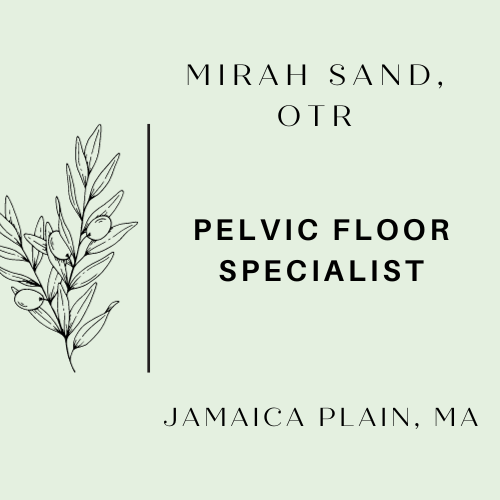Birth Prep: Pelvic floor therapy as preventative care
It’s common for clients to view pelvic floor physical therapy or occupational therapy as something that’s only necessary when there’s a “problem” that needs to be “fixed.” This focus on management after an injury isn’t surprising, considering how much of our medical system in the US is focused on symptom management, rather than preventative care.
What if we started shifting our perspective, so that pelvic floor therapy acted more as preventative care for a more empowered birthing process? The more educated you can be about evidence related to interventions and birth outcomes, the easier it will be for you to approach labor and delivery with a sense of confidence and peace. Additionally, starting pelvic floor therapy as a pregnant person is helpful for beginning to consider some aspects of your early postpartum healing and recovery.
So how can pelvic floor therapy support you in preparing for birth? Here are 7 ways a pelvic floor physical therapist or occupational can help improve your birthing experience.
Core control and body mechanics during pregnancy
Hip and spinal mobility
Connecting to your pelvic floor
Breathing and pushing mechanics
Birthing positions
Pain science and childbirth
Perineal massage
Preparing for early postpartum
Core control and body mechanics during pregnancy
As you’re nearing your due date, you may notice that your center of gravity has drastically changed, making it difficult to do many daily movements such as walking, cleaning, bending over, squatting, etc. Your pelvic floor therapist will teach you how to connect to your core in a functional way in order to minimize back pain, diastasis recti, and pubic symphysis dysfunction. Learning how to stabilize your core during pregnancy will benefit your postpartum recovery, as you will have already practiced engaging these muscles and made them a part of your sense memory.
Hip and spinal mobility
You don’t need to be overly flexible in order to have a successful birth. But starting to work on hip and spinal mobility may be helpful for the stages of labor when the baby is moving through the pelvis. Being able to move in and out of hip internal and external rotation, as well as finding mobility throughout your whole spine, may be beneficial for reducing birth injury and increasing options for different birthing positions.
Connecting to your pelvic floor
Although there’s now access to so much more information about the pelvic floor, you may find yourself lost in a sea of suggestions and advice. Working with a pelvic floor therapist before birth can help with not only getting educated about what the pelvic floor is and what it does, but how to actually feel this group of muscles. And no, we’re not going to tell you to do 100 kegels!
Breathing and pushing mechanics
Being able to sense into the pelvic floor will benefit you as you learn about the mechanics of pushing during labor. Practicing what it feels like to actually use your breath to effectively lengthen the pelvic floor will allow you to feel more prepared for when you’re actually laboring.
Birthing positions
There are other ways to labor besides being on your back! Your pelvic floor therapist will go over the research backed positions that will hopefully help you prevent tearing and increase ease of pushing. We’ll talk about positions appropriate for a medicated and non-medicated birth, and help you practice these positions in your body in order for you to feel confident about how to move in and out of them.
Pain science and childbirth
Many pregnant people are concerned about how painful labor may be. Your pelvic floor therapist can help educate you on some of the science around pain, and the role of the brain and nervous system in pain processing. This can help with creating a plan regarding pain management during childbirth.
Perineal massage
Starting perineal massage at about 34-36 weeks postpartum can be helpful for reducing the degree of tearing that can occur during childbirth. Your pelvic floor therapist can help you feel confident that you’re performing the massage correctly, as well as teach partners how to perform the technique as well.
Thinking about early postpartum
Although it can feel empowering and relieving to consider how to best prepare for labor and delivery, it’s just as important to consider how you’re going to feel in the early postpartum period. Your pelvic floor therapist can help you think about stretches, breastfeeding or chestfeeding body mechanics, breathing techniques, and pain relieving measures to ensure that the early postpartum period is as comfortable as possible.
Pelvic floor physical therapy or occupational can be an essential part of your pre and postnatal prep and recovery. I can help guide you towards a birth where you feel knowledgeable, confident, and secure every step of the way.
